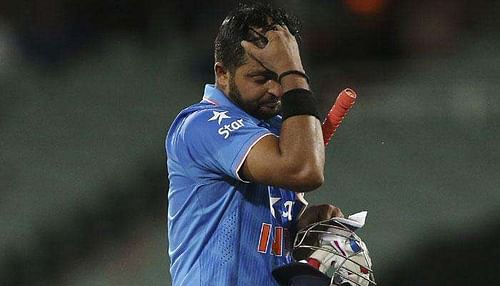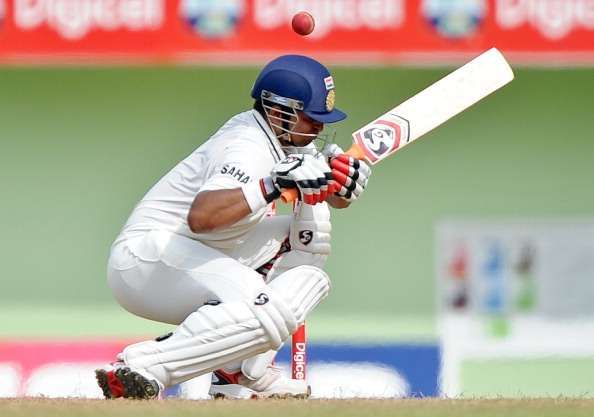
Can IPL 2017 resurrect Suresh Raina's crumbling career?
Nestled in a corner of Muradnagar, the Ordnance Factory – a unit under the Military of Defence – supplies castings for aerial bombs to the Indian Army. For this small town in Ghaziabad, their most famous child once reprised the same role for the Indian Team, launching missiles into the stands with tremendous bat speeds and a wild swoosh of the willow.
From toiling in UP’s troubled backgrounds to being a World Cup winner, Suresh Raina’s journey has been an inspiring tale. Yet, his career has suddenly turned into a misguided missile, with chunks falling off as he steers off course.
Once the lynchpin of the middle order, Raina has come tumbling down, and how. His last ODI dates back to 2015, he did not participate in the Syed Mushtaq Ali and Vijay Hazare Trophy, and was left out of the Deodhar Trophy squads.
The biggest blow came in the form of a BCCI contract snub, with Raina not even getting a Grade C entry. A former UP coach has gone on to claim that Raina’s priorities have changed since he became a family man, and has become “a reluctant cricketer”. From an energetic, hardworking spark to a jaded T20 player:
What has happened to Suresh Raina?
When Greg Chappell took over from John Wright, the impetus was to bring in a core of young, firebrand players who would shape the Indian team in the coming few years. While lots were tried and tested, only a select few lasted the race. Raina has managed to cling on, but only just.
He played his first international match even before the likes of Virat Kohli and Rohit Sharma made their first-class debuts. Despite being at the topmost level for more than a decade, Raina never transformed into a senior player in the team. Age is on his side, but did Raina peak early? Or did he never peak at all?
He never quite transformed his batting as well: he had problems with the short ball during the initial phases of his career, and the problem lingered on. The cracks widened in Test cricket, and were burst open against England in 2011.
2010 could have turned his career for the better. He made his Test debut (where he scored a century), was made the captain of the ODI team a year later, and had experienced almost half a decade of international cricket.
Also, with Rahul Dravid fading away from the limited overs side, Raina could have grabbed the place firmly and sealed the spot with some big scores. He played his part earnestly, but the game never went upward. The next few years went in a similar fashion: a handful of half-centuries but no big knocks.
One of the major reasons for it was Raina playing low down the order, often finding himself low on partners. Instead of promoting him up the order, the management found it apt for Raina to reprise the finisher’s role.
By then, Virat Kohli had started to make his presence felt, and by the time the 2011 World Cup came, the Indian top order read: Sachin, Sehwag, Gambhir, Kohli, Yuvraj.
His figures at No.4 highlight how his career could have benefitted with a promotion up the order. In 18 ODIs where he played two down, he had an average of 45.00, with a century and six fifties, and a strike rate a whisker under 100. However, players like Kohli and Rahane shoved him aside, sending him spiralling down the batting order.
His flexibility became his bane. Because he could fit anywhere, Raina was put where he was. And the role of the finisher is that of a funambulist: there’s hardly any room for error.
He delivered in a few crunch situations, scoring a crucial cameo against Australia in the quarters of the 2011 WC, and a century against Zimbabwe in the 2015 WC, but was never consistent with the same (he had a torrid Champions Trophy in 2013).
Also, the short ball came to haunt him in whites in 2011, a problem that killed his Test career and dented his pride in limited-overs as well. Suddenly, he was a sitting a duck to bouncers, surprisingly unequipped to deal with the menace.
The selectors still had faith in him, and so had the team. He was made captain once again, this time in 2014, where he led the team to their tour to Bangladesh, with neither Kohli or Dhoni participating. Yet, later that year, with MS Dhoni’s shock retirement from Tests, Kohli was handed captaincy.
A proven hard worker who was always committed to excel, Raina fell short in this regard. Someone like a Kohli, who was prone to chasing balls outside the off stump, rectified the mistake and evolved into a much better player after 2014. Raina is still found wanting.
In less than a month, the IPL arrives. It is the tournament that helped him force a comeback in 2008. He has been a stellar performer in the T20 league, the most capped player of the tournament. There is no CSK, no Dhoni to play under. He’s got a whole franchise to himself, and a huge point to prove.
| Matches | Runs | Average | Strike Rate | Fifties |
| 147 | 4098 | 33.59 | 138.58 | 28 |
Hopefully, the wild swipes over midwicket and the delectable inside out cover drives resurface, traces of which were visible during his enterprising knock against England in the Bengaluru T20I earlier this year. Things might have changed, but he is still an electric fielder, a versatile batsman, and a handy part-timer. A stupendous IPL might see him earn a surprise recall for the Champions Trophy in June. Michael Hussey started his Australia career at 29, there is no reason why Raina can’t reboot his at 30. For that to happen, the Raina of old, with his steely resolve, would need to find a newer Raina, bereft of the inadequacies, a structured gameplay, and a tighter technique.
Extra cover: IPL 2017: Top 5 fielders with most catches in the IPL

